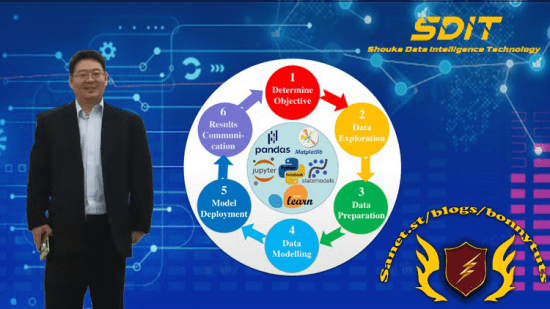
MP4 | Video: h264, 1280×720 | Audio: AAC, 44.1 KHz, 2 Ch
Genre: eLearning | Language: English + srt | Duration: 34 lectures (7h 2m) | Size: 2.97 GB
A Real-World Project using Jupyter notebook, Numpy, SciPy, Pandas, Matplotlib, Statmodels, Scikit-learn, and many more
What you’ll learn
Data analysis and modelling process
Setting up Python data analysis and modelling environment
Data exploration
Rename the data columns
Data slicing, sorting, filtering, and grouping data
Missing value detection and imputation
Outlier detection and treatment
Correlation Analysis and feature selection
Splitting data set for model fitting and testing
Data normalization with different methods
Developing a classic statistical linear regression model
Developing a machine linear regression model
interpreting the model results
Improving the models
Evaluating the models
Visualizing the model results
Requirements
Basic Python language knowledge needed to understand the codes
Description
We are living in data explosive world where data is ubiquitous, and thus it is essential to build data analysis and modelling skills. Based on TIOBE Index, Python has overpassed Java and C and become the most popular programming language of today since October 2021. Python leads the top Data Science and Machine Learning platforms based on KDnuggets poll.
This course use a real world project and dataset and well known Python libraries to show you how to explore data, find the problems and fix them, and how to develop classic statistical regression models and machine learning regression step by step in an easily undrstand way. After this course, you will own the skills to
(1) to explore data using Python Pandas library
(2) to rename the data column using different methods
(3) to detect the missing values and outliers in dataset through different methods
(4) to use different methods to fill in the missings and treat the outliers
(5) to make correlation analysis and select the features based on the analysis
(6) to encode the categorical variables with different methods
(7) to split dataset for model training and testing
(8) to normalize data with scaling methods
(9) to develop classic statistical regression models and machine learning regression models
(10) to fit the model, improve the model, evaluate the model and visulize the modelling results, and many more
Who this course is for
Business analysts
Data analytics professionals
Statisticians
Engineers and scientists for data analysis, modelling and machine learning
Anyone who wants to learn data analysis and modelling with Python for his/her projects
Password/解压密码www.tbtos.com
转载请注明:0daytown » Master Python Data Analysis and Modelling Essentials